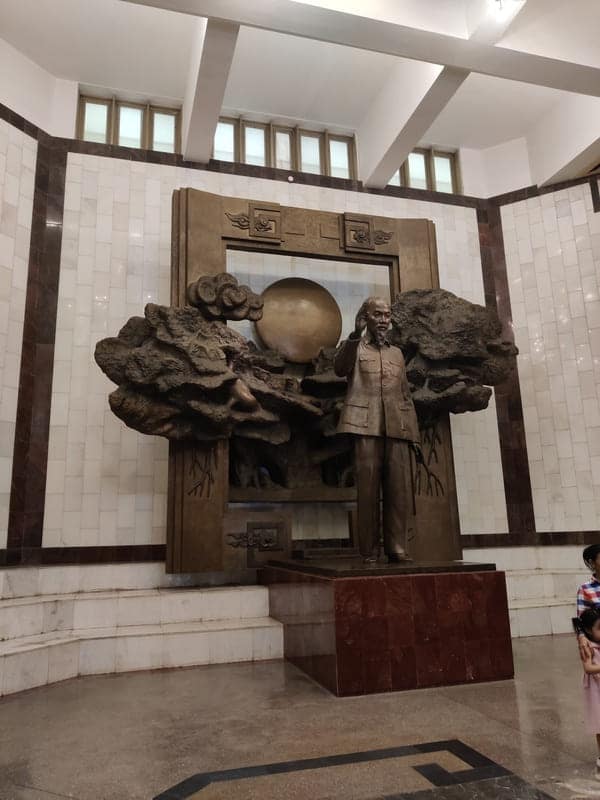Ho Chi Minh Mausoleum blog. One sunny morning we took off on the local bus to Hanoi from Bac Ninh and alighted at Long Bien. We didn’t have an itinerary in mind, but this Mausoleum was to be our first stop.
The constrained timings for visiting the Mausoleum are only the morning hours (timings differ on seasons). So we hurriedly booked a Grab taxi from Long Bien bus station to the Mausoleum.
It was 9 a.m. then. My friend was worried we still wouldn’t get a chance; the queues to enter the mausoleum are typically like the ’97 Nokia game’s snake length just before you lose.
Nevertheless, our trip turned out amazing. It took a couple of hours to cover the park. Here goes my Ho Chi Minh Mausoleum blog (and guide)!
*This post contains affiliate links.
Ho Chi Minh Mausoleum Blog
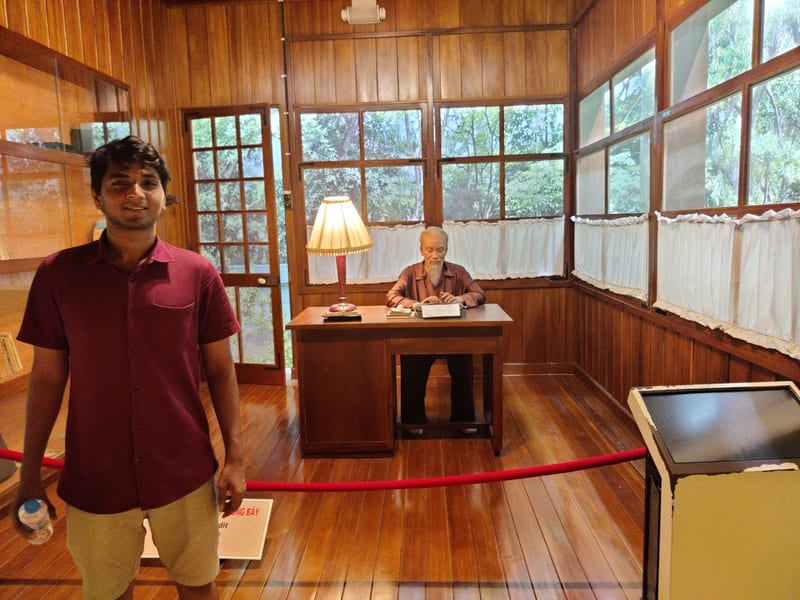
Is Ho Chi Minh Mausoleum worth visiting? Definitely, yes! Ho Chi Minh’s tomb ought to be the priority in Hanoi. The Mausoleum houses the preserved body of Ho Chi Minh, a revolutionary and Vietnam’s most respected leader.
Sure, there are World Heritage sites like Halong Bay that remain undefeated near Hanoi. But visiting it would be impossible today without Vietnam’s struggle.
He is the first person to pop up anywhere when it comes to Vietnam’s independence. The financial capital of Vietnam, Saigon, is now named after him – Ho Chi Minh City. Upon his death, his body now rests in a cool preserved glass coffin in Vietnam’s capital – Hanoi. Hundreds and thousands still visit the Mausoleum to pay homage to him.
With long queues throughout the morning, visitors only get to walk in non-stop lines. The stories of the war hero and spirits of people seem endless here. But this should give enough reason to visit it.
Oh, and also, photography is strictly not allowed on the premises. It’s disrespectful to do so. Make sure to keep your cameras aside here.
For the locals (Vietnamese), the Mausoleum is free to visit. It costs VND 25,000 for a foreigner. It’s best to visit early (unlike us) to avoid the long queue.
Keep in mind to enquire about the timings and availability beforehand. Due to the intensive nature of preservation, the Mausoleum isn’t open on Mondays and Fridays. The morning timings also differ with the summer or fall season.
Sometimes it’s open from 7:30 – 10:30 am and sometimes from 8:00 – 11:00 am. Also, the Mausoleum remains closed for 2 months every year. It’s usually October – November but these dates can differ based on maintenance.
Getting around Hanoi (or any part of Vietnam) is a pain without the Internet in your pocket. Especially when you’ll need Google Translate to say hello.
Book them in advance to avoid overpriced cards! I recommend using Klook.com to get your sim cards (they cost only like $7 for 4GB/day!) – pick them up at the Vietnam airports before you go:
Klook.comThings to Do near Ho Chi Minh Mausoleum
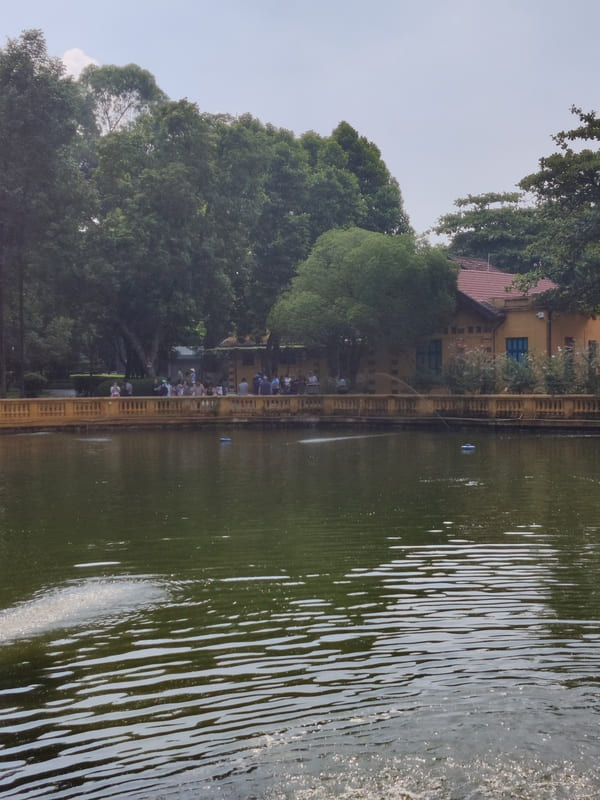
Guess who were the unlucky ones to visit it during those closed two months? Us! We were on time around 10 am (I guess). We were afraid we were already late as there weren’t any queues in sight.
However, the Royal Guard informed us that it had been closed for maintenance. My friend and I exchanged glances. At least now we had the rest of the place to look around. And that’s what we did.
Just like the Golden Bridge at Ba Na Hills, the Mausoleum building was only part of the complex. There are many other things to check out here. Even without the Mausoleum, I’d say it was worth visiting!
Explore Ho Chi Minh’s Stilt House
Close to the Mausoleum is Ho Chi Minh’s Stilt house. This is a modest house where Ho Chi Minh himself resided in his final 11 years from 1958.
Again, it was free for the locals. I had never wished so badly to look Asian. Because the moment the entrance staff saw our Indian skin tones, they mentioned it cost VND 25,000 for entry. But I’d highly recommend visiting it.
You’ll observe that the house, the President of Vietnam’s home, isn’t extravagant. It’s a simple Vietnamese stilt house with a modest garden and pond. Glass panels have been set up in place to let us into the world of the former President’s living spaces.
My favorite amidst everything were the cars that Uncle Ho (Ho Chi Minh’s nickname) kept in his garage. These were old bulky puffy cars with round headlights and curvy bodies. There were the ZIS 115 and GAZ M20 Pobeda both gifted by the Soviet Union. The final was the Peugeot 404.
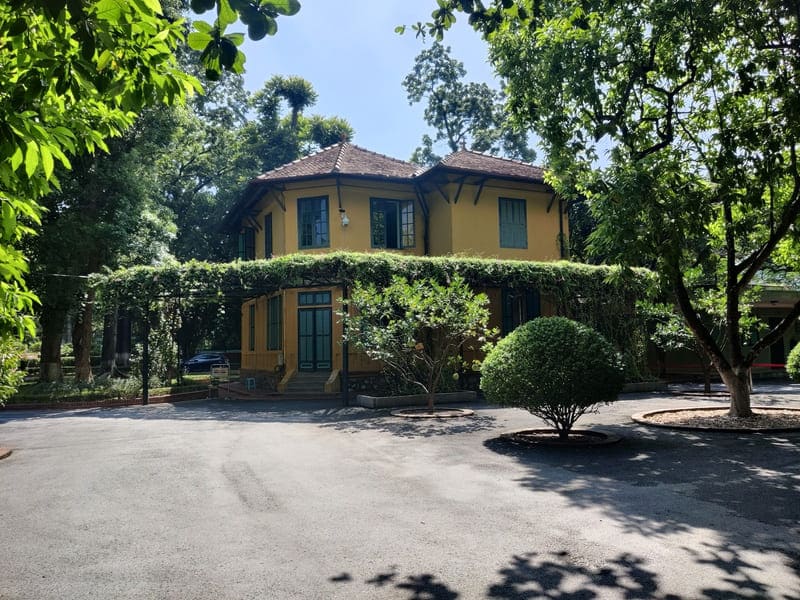
The Presidential Palace (which is next to it), on the other hand, is a majestic French Colonial Palace.
As the story goes, when Vietnam became independent, Ho Chi Minh – the president was offered to live in the presidential palace. But Uncle Ho refused and had the traditional house built next to it.
Today visitors aren’t allowed to enter the Presidential Palace, but you can pay and walk around its gardens.
Here’s another blog on our Vietnam travel: Da Nang: A Lowkey City in Central Vietnam
Check out the One Pillar Pagoda
Walking by the mausoleum complex again to the other side and by some shops, we found many people going through the spaces between the stalls to something beyond. Wondering what it could be, we squeezed through as well.
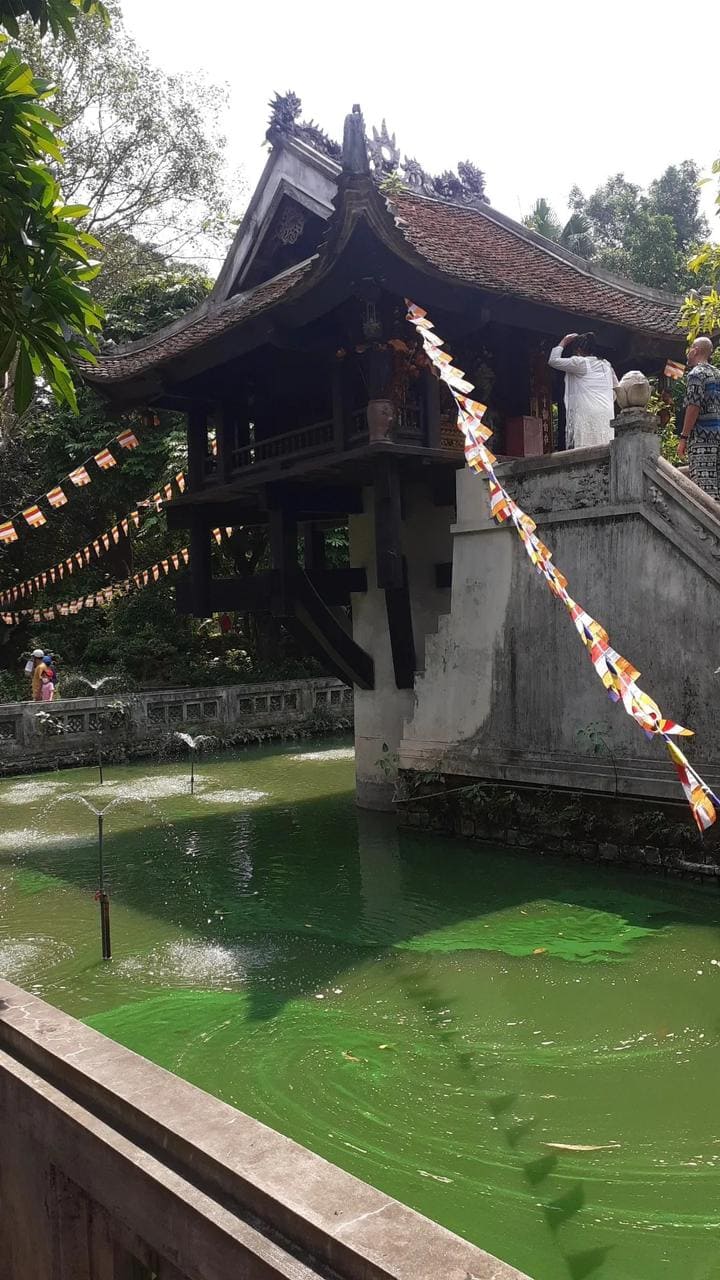
Voila! We found the One Pillar Pagoda. It’s a wooden temple built on a single large pillar amidst a square lotus pond. The temple’s entrance is supported by steps reaching outside the pond.
I didn’t realize its significance back then, but it has its load of history. But the key takeaway is that it was originally built in 1049 by Ly Thai Long (yes, almost a thousand years old).
It stands as one of Vietnam’s most iconic temples today. During the Ly Dynasty, people came to worship and even celebrate festivals. But there were many rulers throughout Vietnam’s history, weren’t there? It saw the Ming Dynasty, then the Nguyen Dynasty which again rebuilt it.
A Vietnamese lieutenant in the French Army even blew up the Pagoda before withdrawing from Vietnam post-Indo-China war.
But it was again restored later by the Democratic Republic of Vietnam. Phew!
At last, the Ho Chi Minh Museum
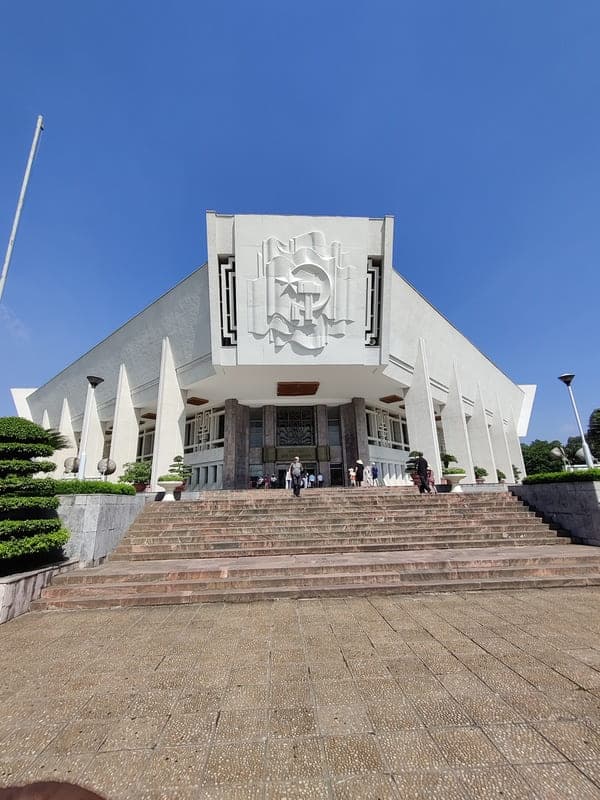
Towards the end of the Ho Chi Minh Complex after the One Pillar Pagoda is the Ho Chi Minh Museum. Its entrance itself boasts an imposing white structure with a large symbol of Hammer and Sickle (communism) at its entrance.
As the name suggests, this museum is a gallery of all aspects of Ho Chi Minh’s life. His travels around the world to seek freedom for Vietnam, his upbringing, the gifts, and artifact collections, and his political life to his death – everything is documented here.
Today, over 170,000 artifacts related to Ho Chi Minh’s life are collected from around Vietnam and the world. I was surprised to find those fancy floral tea cups and saucers on display here. There were uniforms of soldiers, weapons, and a model of the desk he worked at!
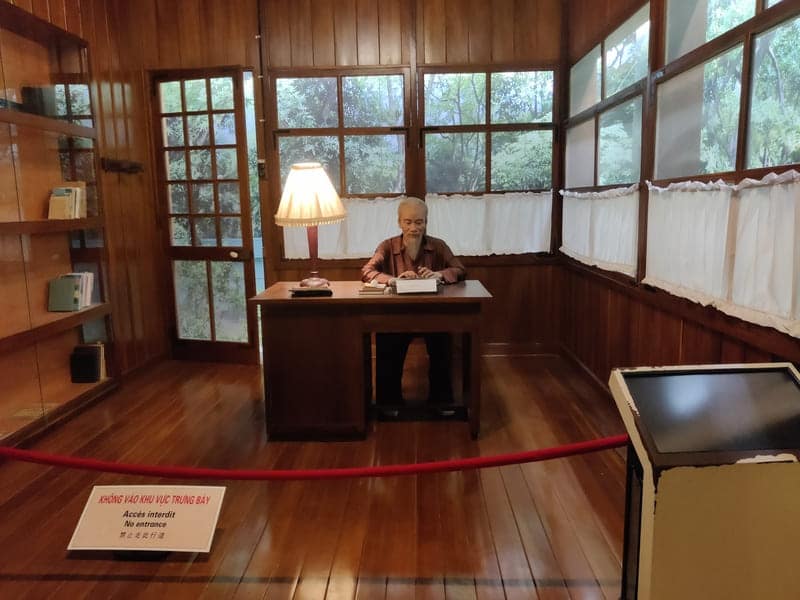
I recommend visiting the museum, but I also highly encourage you to get a guide along (for non-Vietnamese). Like most renowned museums, the exhibits of different times of Ho Chi Minh’s life have been organized on different levels.
The only downside is every description is in Vietnamese. We only went from pictures to pictures to artifacts to pictures. If only we had a guide along!
Exiting the Ho Chi Minh Complex
Ho Chi Minh Mausoleum blog. Post visiting the museum, we had covered everything and it was time for lunch. We had spent a couple of hours here and it was time for lunch.
Heads up – my friend wanted to use the washroom at the complex towards the Museum’s end exit. It was horrifying. It didn’t have a door and I had to keep watch while he went in… don’t ask. Let’s hope they already fixed that now.
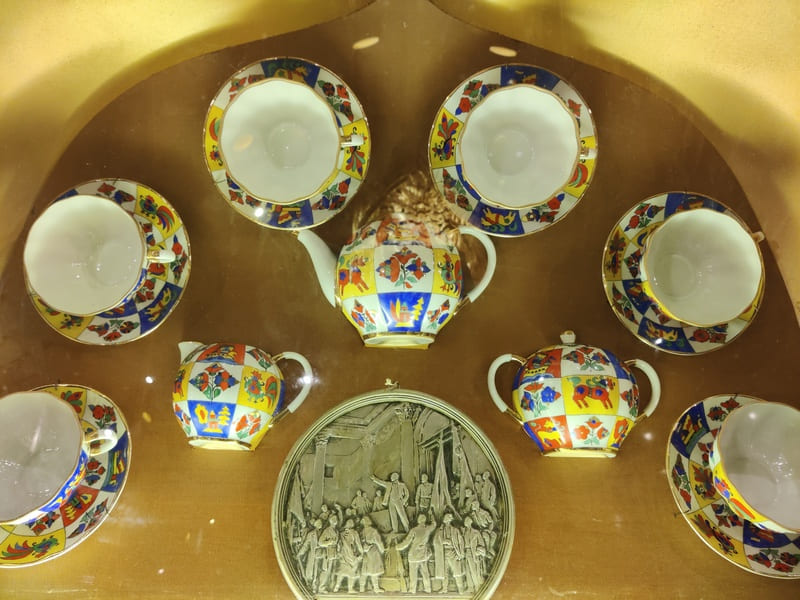
Ahem, anyway our next stop was the Hanoi Train Street. We were hungry and had to see the train street – so why not? Hanoi Train Street is by far one of the… let’s save that for another story, shall we?
That should end this Ho Chi Minh Mausoleum blog. As I wrote this post, I learned much more about the complex. There were some popular questions from other travelers, so I made a tiny FAQ below.
See ya and happy traveling!
Understanding Ho Chi Minh’s stories with Vietnamese descriptions was impossible for us. But we hadn’t the time to get ourselves a day guide. Thus I recommend you to do so!
Here’s a tour I handpicked from Klook – they cover the Ho Chi Minh complex in Hanoi. Hurry and book your tour today!
Klook.com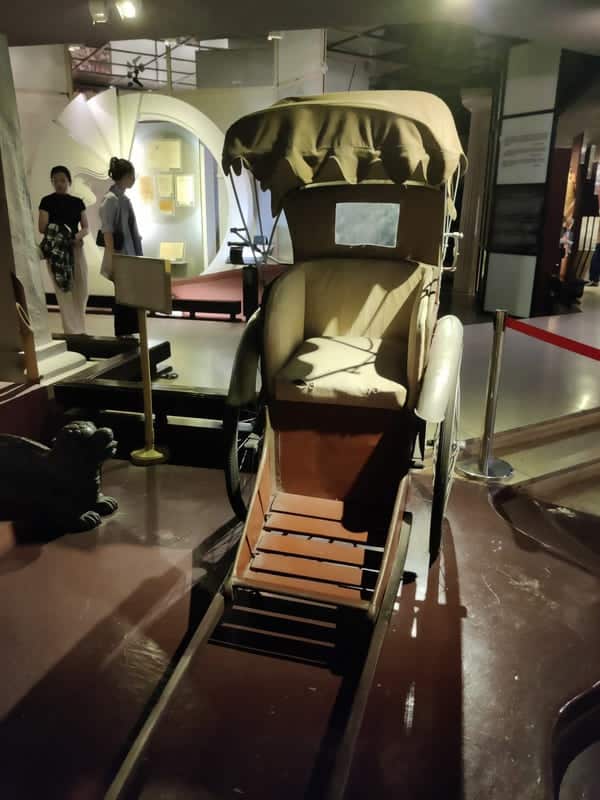
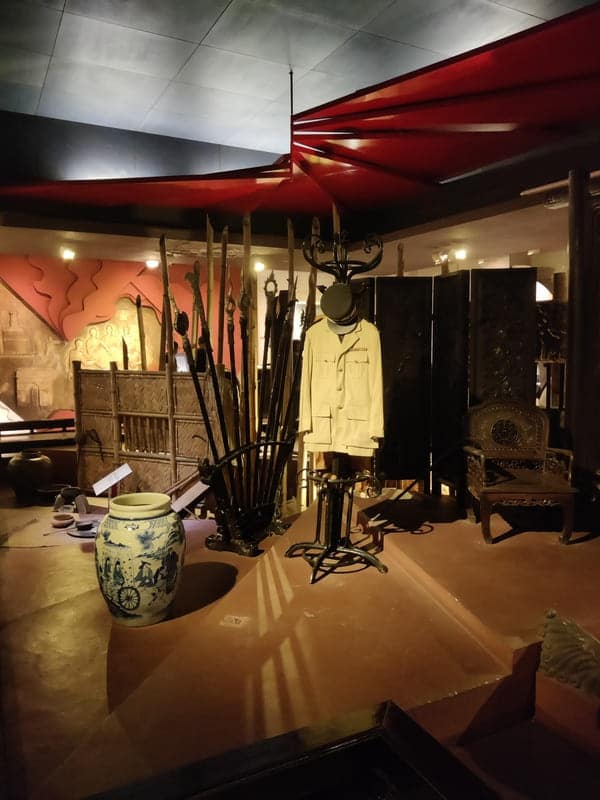
Top FAQs – Ho Chi Minh Mausoleum Guide
Are visitors not allowed to take pictures inside Ho Chi Minh Mausoleum?
No. Taking pictures in the Ho Chi Minh Mausoleum is strictly prohibited. Be mindful about keeping electronics away when walking in the Mausoleum.
Is there a dress code for the Ho Chi Minh Mausoleum?
Avoid wearing legwear that floats above the knees, sleeveless tops, and tank tops. I’m not sure if I saw the warning sign, but as an outsider, it’s best to be respectful. Both, to the most well-known Vietnam’s revolutionary and its people.
How much does it cost to go to Ho Chi Minh Mausoleum?
For non-Vietnamese, the entrance fee for the Mausoleum costs VND 25,000 (around USD 1). For the locals, however, it’s free.
Can people take flowers to the Ho Chi Minh Mausoleum?
Yes, you may take the flowers to the Mausoleum but I believe not into the building. One can lay flowers at the mausoleum even when it’s closed. Feel free to attend the daily flag-raising and lowering ceremonies.
How many people visit the Ho Chi Minh Mausoleum?
Ho Chi Minh Mausoleum blog. The Mausoleum gets anywhere between 2000 to 8000 visitors depending on the day. On National events like Vietnam’s Independence Day, the Mausoleum gets the big picture where thousands show homage to Uncle Ho.
These results come out year after year in National newspapers where the number of visitors for that day ranges between 30,000 and 50,000!
